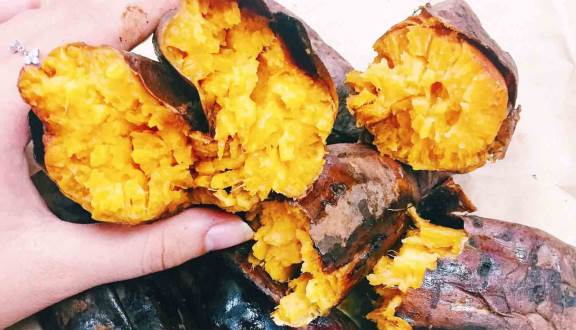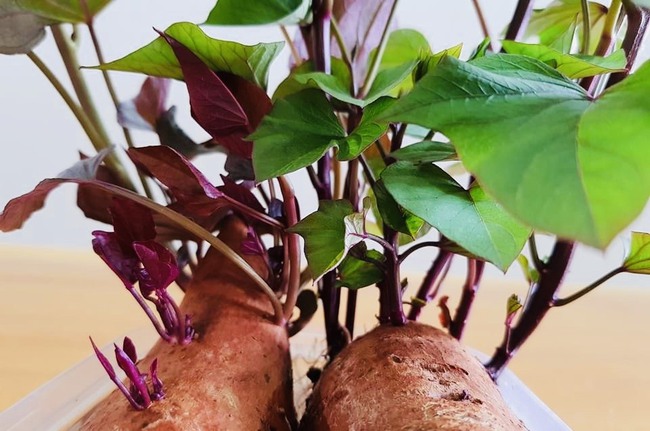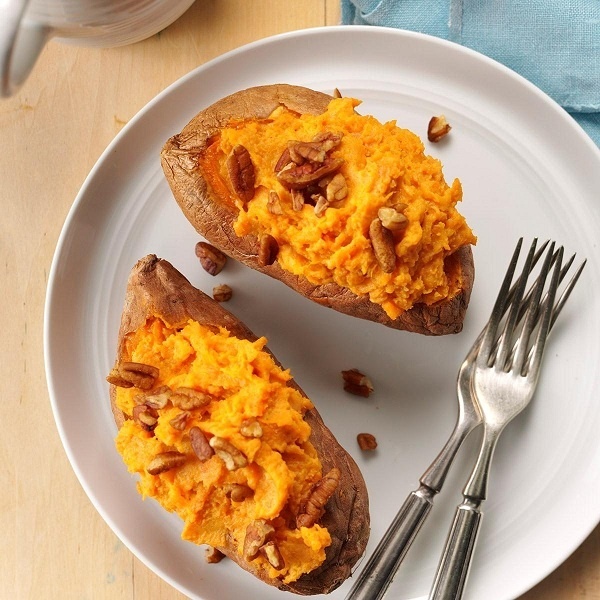We recently rescued a batch of sweet potatoes and purple sweet potatoes. Many customers have purchased 5-10kg of sweet potatoes in a single order. However, if you don’t know how to properly store and process them, your sweet potato dishes may lose their deliciousness and nutrients.

Illustrative image
Here are 3 common mistakes in storing and processing sweet potatoes that many people overlook. Let’s see if you’re making any of these mistakes:
1. Storing sweet potatoes in the refrigerator
Storing sweet potatoes in the refrigerator can alter their cell structure and make the core of the sweet potatoes harder, even after they’ve been fully cooked. The best way to store sweet potatoes is in a cool, dark place. This will ensure that the sweet potatoes remain soft and sweet when cooked.
2. Washing sweet potatoes with water before immediate processing
It is important to clean sweet potatoes before cooking or cutting them. Sweet potatoes grow in the ground, so their skins often have dirt and sand. If you don’t wash the sweet potatoes properly, there may be grit and dirt in your food.

However, it is not recommended to wash the sweet potatoes immediately after buying them. Clean the sweet potatoes right before processing, as exposing them to water without immediate cooking may cause them to sprout. Although sprouted sweet potatoes don’t produce toxins and can still be processed normally, they have lower nutritional value and their taste may change, making them less delicious when cooked.
3. Not poking holes in sweet potatoes when baking
Baking sweet potatoes in the oven can create pressure inside. If the pressure builds up enough, the sweet potatoes may burst. To prevent this, use a fork to poke small holes in the sweet potatoes, allowing the steam inside to escape and reducing the pressure.

Illustrative image
Should I eat yellow sweet potatoes or purple sweet potatoes?
Both yellow sweet potatoes and purple sweet potatoes are nutritious foods. However, each type has different nutritional content.
1. Purple sweet potatoes contain more protein than yellow sweet potatoes
Studies have shown that 100g of purple sweet potatoes contains 1.59g of protein, while 100g of yellow sweet potatoes only contains 1.26g of protein. Therefore, purple sweet potatoes are more suitable for those who need to increase their protein intake.
2. Different mineral content
100g of purple sweet potatoes contains 45.2mg of calcium (1.28 times more than yellow sweet potatoes), 1.7g of iron (1.42 times more than yellow sweet potatoes), and 23.8g of magnesium (1.63 times more than yellow sweet potatoes).
On the other hand, yellow sweet potatoes have a higher vitamin C content compared to purple sweet potatoes. Specifically, 100g of yellow sweet potatoes contains up to 10.96mg of vitamin C, while purple sweet potatoes only contain 5.96mg.
With these tips and information, you can now store and process sweet potatoes in the “perfect” way to enjoy delicious dishes made from this familiar and healthy ingredient.






































